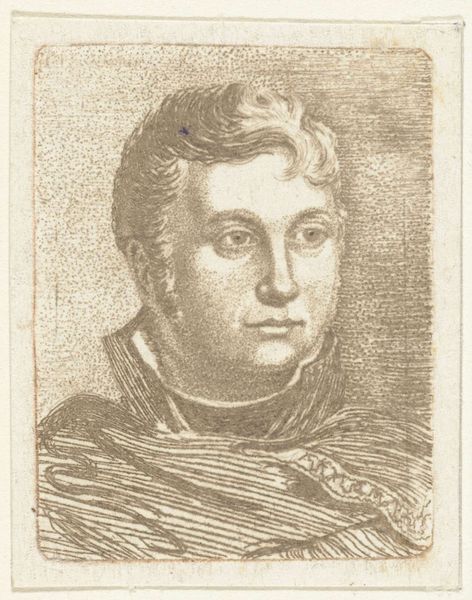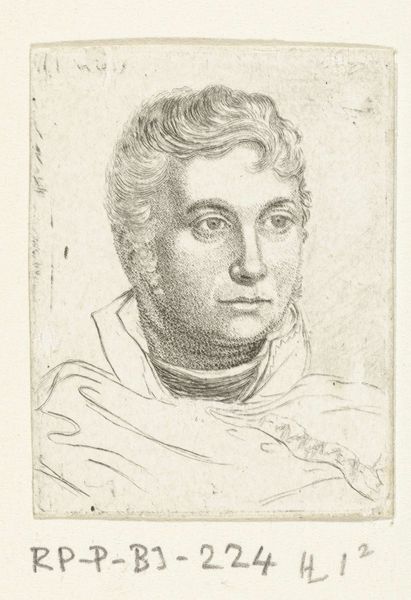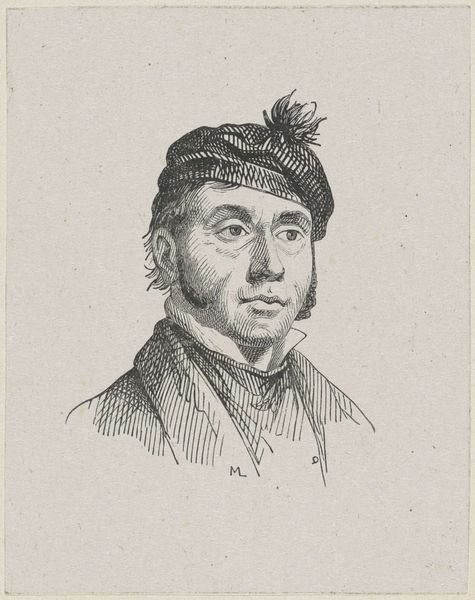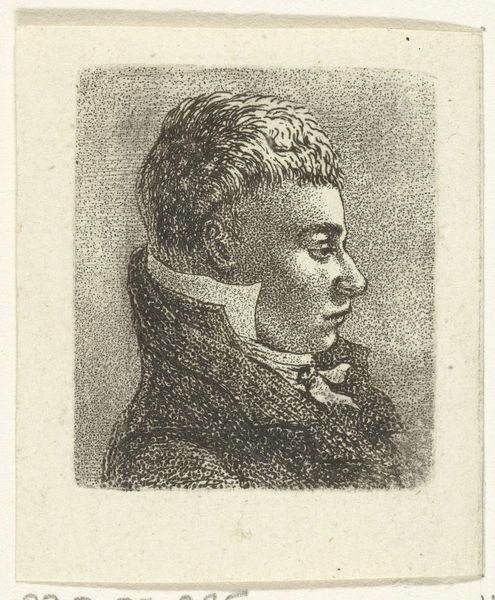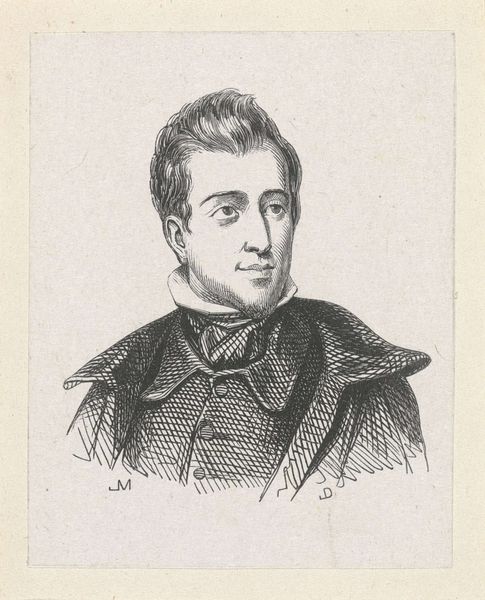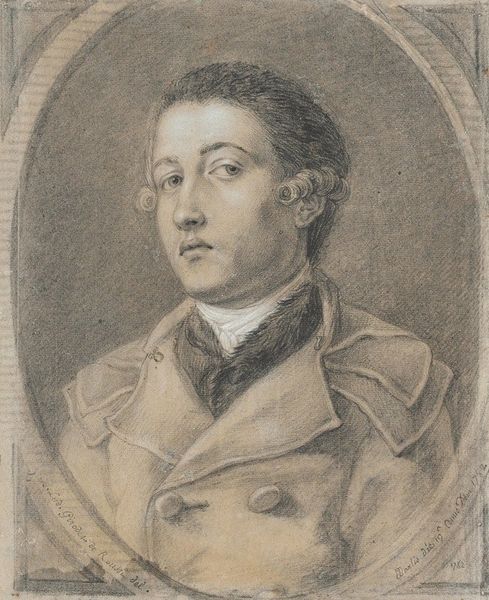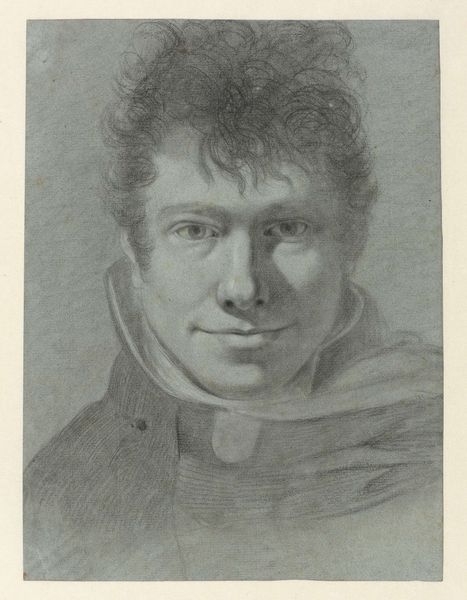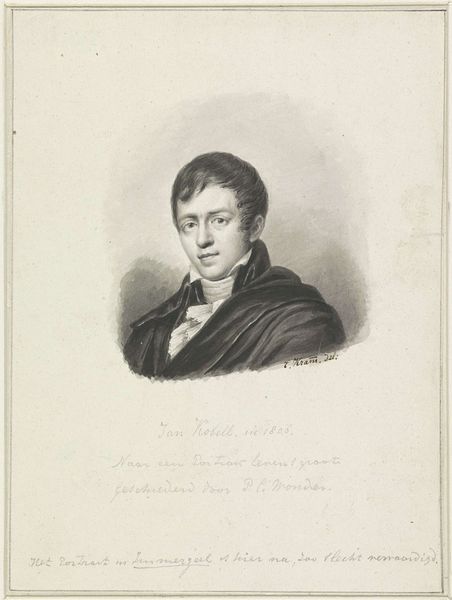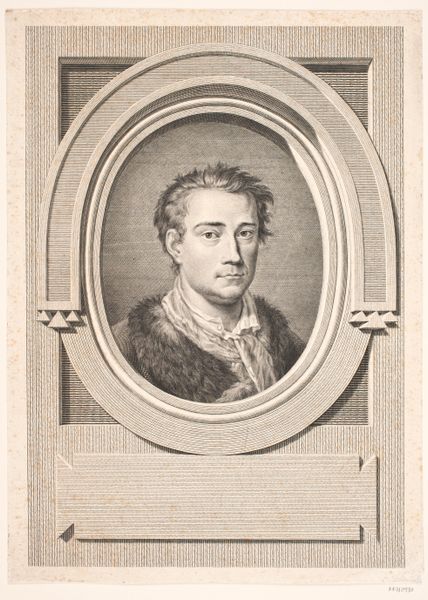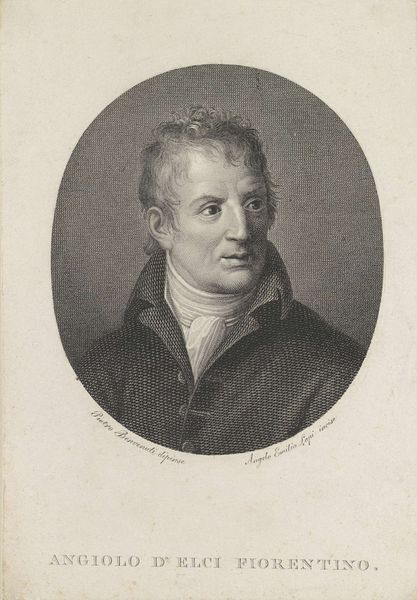
print, engraving
#
portrait
#
neoclassicism
# print
#
romanticism
#
portrait drawing
#
history-painting
#
engraving
Dimensions: height 52 mm, width 40 mm
Copyright: Rijks Museum: Open Domain
Curator: Here we have Ernst Willem Jan Bagelaar’s "Self-Portrait as an Officer," created in 1815. The work is an engraving, a printmaking process that requires meticulous labor. Editor: There's an austerity to it. Given the medium and period, that almost monochromatic palette contributes to a sense of seriousness, perhaps even a bit of melancholy? It’s small, but carries a heavy weight, like an artifact. Curator: Indeed. Let's consider that weight materially. The engraving process involved Bagelaar incising lines onto a metal plate, inking it, and then transferring that image to paper through a press. Think of the embodied labor inherent in its production – the precision and physical effort. This connects to debates about printmaking versus painting at the time: the mechanical versus the artistic. Editor: Right, and within that historical context, who could access these printed images and how would their meanings circulate? Uniforms and representations of military men weren't neutral. Power, class, and perhaps, a certain type of masculinity were very deliberately crafted within these images. The romantic qualities speak of personal experience; there's also something official, which begs the question how he wanted to be perceived. Curator: Precisely. The distribution enabled a democratization of sorts – an ability to circulate an image of himself, his persona as an officer, far more widely than a single painted portrait would have allowed. This is early image distribution tech. Editor: It makes me consider who sees this and what impact it could have had. We must recall it appeared so shortly after the Napoleonic Wars and ask whether viewers considered its politics or the implications for women in military family situations and similar, underrepresented, situations? Curator: Interesting point. Looking closely, the marks of the engraving create subtle textures and gradients. Note how this creates volume and defines the planes of his face and the folds of his military garb. He would have considered the quality of the paper stock itself. It's all interwoven to produce an effect that speaks of self-assuredness and pride. Editor: Seeing it through the lens of those complex intersections adds an important dimension, allowing us to recognize Bagelaar’s role, but also prompting us to question whose perspectives may be unintentionally overlooked. Curator: The layers of labor, and then the layered interpretation of it across time… It enriches what at first glance seems to be simply a representational image. Editor: Yes, and for me it adds a human dimension that often becomes lost when viewing history through traditionally narrow channels.
Comments
No comments
Be the first to comment and join the conversation on the ultimate creative platform.

